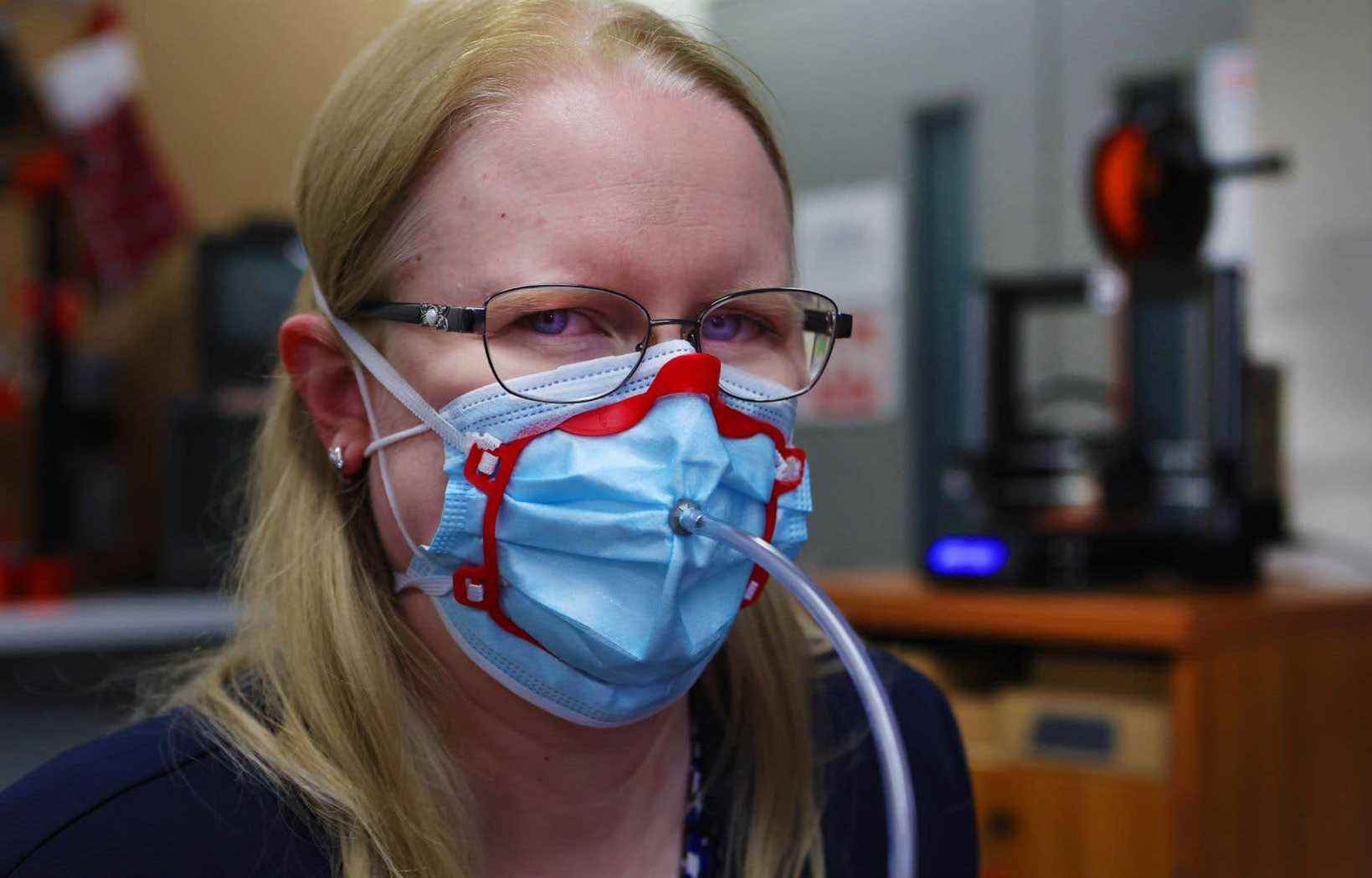A Concordia University researcher has found a way within everyone’s reach to improve the protection offered by surgical masks: 3D printed frames.
During the first wave of the COVID-19 pandemic, when various healthcare centers around the world lacked personal protective equipment, Nathalie Duponsel wanted to take advantage of her interest in 3D printers. On the Thingiverse web platform, she found the creation of a young woman named Shiuan. The latter had published instructions for making them at home.
“These are frames that take about 20 minutes to print and come in four sizes. You then soak them in hot water, which makes them soft, and you can mold them to your face. You add an elastic band to hold them and you wear them over a certified surgical mask, ”explains Mme Duponsel, who is an elementary school teacher and researcher in educational technologies.
Mme Duponsel and a team of five other researchers wanted to see if this plastic frame could adequately protect frontline workers in the event of a shortage of N95 respirators.
“Certified surgical masks filter out contaminants up to 95%, like N95, but because they don’t fit well on the face, they can’t be as effective. There are spaces through which air can pass. By adding a frame, we thought it would be possible to create a sealant and force all the air to pass through the filter, ”she says.
Test
To test the process, Mme Duponsel and his colleagues used a PortaCount machine. In hospitals, it is used to verify that the size of the N95 mask worn by each healthcare worker is appropriate.
“We send particles into the air while a person is wearing the mask and the frame. Using a tube on the outside and a tube on the inside of the mask, the machine measures the amount of particles on both sides ”, describes Mme Duponsel.
Certified surgical masks filter out contaminants up to 95%, like N95, but because they don’t fit well on the face, they can’t be as effective.
The results with a frame and different models of surgical masks were very conclusive: the system filtered as many particles as the N95. The researcher emphasizes that the use of N95s remains preferable, when possible, since they are rigorously tested for use in different contexts and to ensure their long-term effectiveness. “But if the N95s aren’t available, that’s an option,” she said.
Mme Duponsel also specifies that the frames do not improve the effectiveness of fabric masks. “Cloth masks filter almost nothing,” she reports. These masks have the function of protecting the people around rather than those who wear them. The researcher also emphasizes that not all disposable masks are certified.
For citizens who would like to produce their own plastic frames, Mme Duponsel has posted instructions online. To have them printed, it is possible to go to public libraries, many of which make 3D printers available to everyone. The Fab Labs workshops are also a good resource on this subject, she believes.
The search for Mme Duponsel and his colleagues are due for publication in a scientific journal shortly. However, it does not intend to continue its work on this subject. She plans to focus on developing educational materials for visually impaired and blind children, including with 3D printers.
This content is produced in collaboration with Concordia University.
